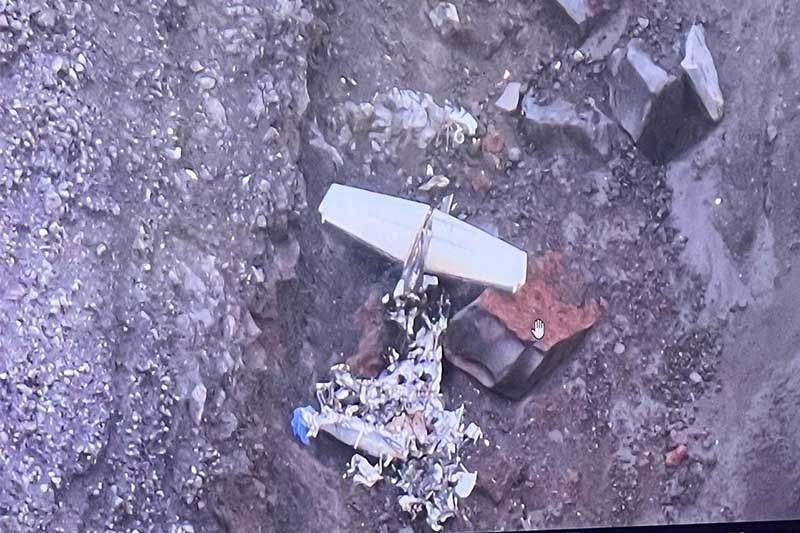Human images seen at Cessna crash site

LEGAZPI CITY, Philippines — Closer inspection of photographs taken from Mayon Volcano where a Cessna plane crashed over the weekend showed possible human images near or at the vicinity of the wreckage, according to the Albay Public Safety and Emergency Management Office.
APSEMO chief Cedric Daep said the images made him and his fellow disaster officials think that the passengers are at the crash site.
“But we cannot yet determine their condition until our rescuers reach the wreckage,” Daep told The STAR yesterday.
He said they were rushing provisions for members of a search and rescue team, who decided to continue the trek to the wreckage, which was spotted over 4,000 feet on the western slope of the 8,000-foot volcano.
“Many of the rescuers had left due to exhaustion. Those who stayed asked us to supply them with food and water,” Daep said.
He said strong winds, thick clouds and the rugged terrain hampered the rescue teams from reaching the wreckage.
“But our rescuers are determined to reach the site to confirm the actual condition of the passengers. Most of them are veteran Mayon climbers,” he said.
Daep said that rescue teams from Sorsogon and Camarines Sur have expressed willingness to join the ongoing search and rescue operations.
The Civil Aviation Authority of the Philippines (CAAP) said all four attempts to reach the wreckage the other day failed due to bad weather.
The CAAP said the team on the ground would try to use all-terrain vehicles to reach the site.
It said the Cessna could have gone off-course, noting how it was found toward the right portion of the volcano.
CAAP deputy director general for operations Edgardo Diaz said the plane was supposed to turn left instead of right.
“If the aircraft was heading north, it was supposed to turn left to proceed toward Manila. What we cannot understand is how it ended up toward the right side,” Diaz said, adding this particular angle is under investigation.
Rescue teams from the Philippine Army and the Bureau of Fire Protection traveled on foot toward the wreckage yesterday.
The first team of responders was estimated to be 300 meters away from the wreckage as of 3 p.m. yesterday, the CAAP said.
“Once the wreckage site is reached and the passengers identified, they will be airlifted to an undisclosed area for medical assessment,” it added.
State seismologists advised the search and rescue teams to be careful as the volcano is under Alert Level 2.
The Philippine Institue of Volcanology and Seismology (Phivolcs) said it recognizes the necessity of the search and rescue mission, but only professionally trained personnel should conduct the operation.
“If there are attempts to mount any rescue activity, the teams should be aware of the risks they are taking. They should prepare for possible hazards such as sudden phreatic or steam-driven eruptions, especially with the recent persistent rainfall over Mayon as well as rockfalls from the summit,” the agency said in a statement yesterday.
It said the hazards are higher as the Cessna plane lies in a gully and the slopes of Mayon are slippery or unstable due to smooth or fragmented lava or near-event deposits.
Phivolcs said entry into the six-kilometer permanent danger zone remains prohibited and any exemption is up to the local government.
The Cessna 340 (RP-C2080) had two pilots and two Australian passengers on board when it took off from the Bicol International Airport at 6:43 a.m. on Saturday. – Ralph Edwin Villanueva, Rudy Santos, Romina Cabrera
- Latest
- Trending
































